

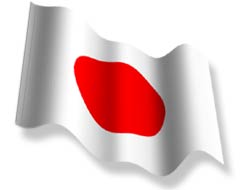 1910-1945:
Japan's colony: 1910-1945:
Japan's colony:
Japan annexes Korea as a colony, and occupies it for 35 years. It was a period of brutality towards Koreans, but a time when some of the groundwork for later economic development is laid. Koreans adopt much of Japanís military and business sensibilities from this period. |
 Japan
surrenders aboard the USS Missouri, Sept. 2, 1945. Japan
surrenders aboard the USS Missouri, Sept. 2, 1945.
1945: Ending Japanese rule:
|
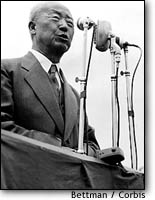 South
Korea's first president, Syngman Rhee South
Korea's first president, Syngman Rhee
1947: South Korea established:
|
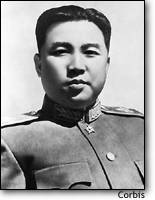 Comrade
Kim II Sung. Comrade
Kim II Sung.
1948: North Korea established:
|
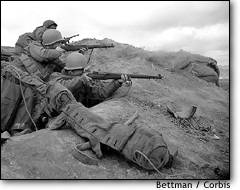 American
soldiers pour fire at enemy targets near the Han River American
soldiers pour fire at enemy targets near the Han River
1950: War breaks out:
|
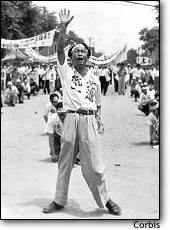
South Koreans protest against armistice. 1953: Country divided:
|
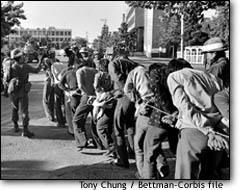
Arrested students are led away by ROK Army soldiers on May 27, 1980, following a raid by troops in the riot-torn city of Kwangju. 1960s-1970s: Cold War alliances:
|
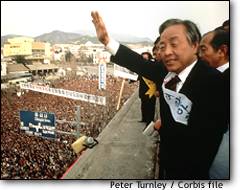
Kim Young Sam Campaigning for South Korean Presidency. 1980s: South and North adjust to new world order:
|
| 1983:
A bomb explodes in the capital of Myanmar, Yangon, during a visit by South Korean President Chun Doo-hwan, killing 17 officials, including four cabinet ministers. Myanmar blames North Korea and severs relations. In 1987, Pyongyang is accused of bombing a South Korean airliner with 115 people aboard, deepening its international isolation. |
| 1993: Nuclear concerns:
Amid concerns about a possible North Korean nuclear weapons program, North Korea test fires a native-built ballistic missile into Sea of Japan. The United States strengthens naval and ground forces in region. |
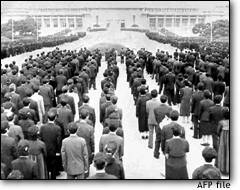
Tens of thousand of Pyongyang citizens line up to pay their last respecst to the body of late President Kim Il-Sung in front of the presidential palace. 1994: Death of a leader:
|
| 1994: Signs of compromise:
Faced with a collapsing economy, North Korea agrees to allow international inspection of its nuclear sites and agrees to allow the United States, Japan and South Korea replace its Soviet-design nuclear reactors, which produce weapons-grade plutonium, with light water reactors. Severe flooding followed by drought push North Korea to a desperate appeal for food aid. Some estimates of the death toll from the disaster are as high as 2 million. |
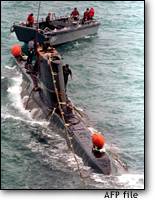
South Korean naval personnel secure lines to the Sang-O (Shark), a North Korean mini-submarine. 1996: Talks begin:
|
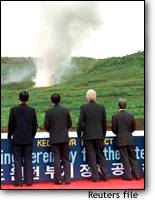
Representatives of nine countries and the European Union attend a ground-breaking ceremony for North Korea's nuclear project. 1997: Glacial transition begins:
|
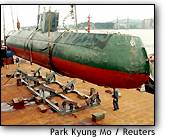
A captured North Korean submarine is lifted onto the deck of a South Korean ship. 1998: Sunshine policy, and clouds:
|
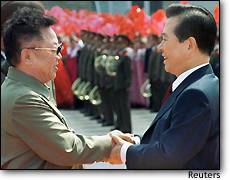 North
Korean leader Kim Jong Il and Korean President Kim Dae-jung meet in Pyongyang,
North Korea North
Korean leader Kim Jong Il and Korean President Kim Dae-jung meet in Pyongyang,
North Korea
2000: Summit breakthrough:
|
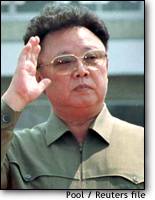 Kim
Jong Il Kim
Jong Il
2002-2003: Tensions flare
|